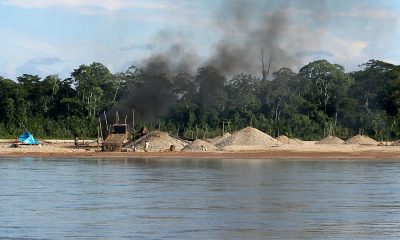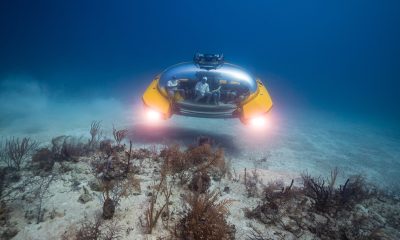By Georgia Lambert via SWNS
Global warming will destroy more than half of Spain's beaches - including the famous white sands of party capital Ibiza, warns new research.
The study shows the permanent damage climate change is likely to have on beaches found on the Balearic Island in the Mediterranean.
The archipelago, which includes Menorca, Mallorca, and Ibiza, attracted more than 13 million tourists in 2019.
And, because island tourism is responsible for generating 25 percent of the local economy, researchers warn that action is needed to stifle the threat.
"Much of the income of touristic regions in the Mediterranean comes from beach and sun tourism: more than 25 percent in the case of the Balearic Islands,"said study first author Miguel Agulles, a PhD student at the Oceanographic Centre of the Balearic Islands.
"This means that it is essential to predict the fate of these beaches under climate change."
The student, who also studies at the Mediterranean Institute for Advanced Studies on Majorca, said: "Here we show that climate change will lead to the permanent loss of more than 50 percent of the beach surface, rising up to more than 80 percent during storm conditions.”
Depending on how warm the sea around these islands will get, it is expected that sea levels will rise between 50 cm and 67 cm.
To curb the climate crisis, the researchers developed a cost-effective way to model the flood levels along the coastlines of the Balearic islands.
The researchers did this by meticulously factoring in the shape and slope of each beach, the graininess of its sad, and the extent of seagrass meadows.
They were then able to predict the degree of coastal flooding and the percentage of beaches that will be lost.
Miguel explained how they approached the model: "A detailed analysis of the evolution of each beach in the Balearic archipelago is very demanding on computer power.
"We have therefore devoted considerable effort in our study to develop methodologies for the analysis and to optimize the computation."
While the world struggles to grapple with the conditions of climate change, extreme weather events are predicted to crop up more regularly in some regions.
However, the authors explained that although the beaches are threatened, the maximum wave height reached during these extreme events will decrease by ten to 15 cm, around the islands.
However, the future is still rocky for the Balearic islands as Miguel and his team have predicted that the region will suffer from coastal erosion, mainly due to the rise in sea level.
Using a global warming scenario drawn up by the Intergovernmental Panel on Climate Change (IPCC), the researchers used their model to predict that in just under 80 years from now, the coastline of the Balearic Islands would have eroded by an average of 9.2 metres under typical weather conditions.
This worrying figure will cause 37 out of the current 869 beaches to disappear without a trace.
The researchers went on to warn that by the end of the century, 254 beaches - which covers 84 percent of the current beach area - will be temporarily flooded during extreme weather.
The scientists explained that even though the flooded beaches would typically 'reappear' afterward, their disappearance will cause serious damage to coastal areas and beach fronts.
Under the IPCC's 'worst case' scenario, which has been named RCP8.5, the coastline will have retreated by a staggering 11.5 metres by the end of the century.
These grim statistics would cause 72 beaches to permanently vanish, while 314 beaches would be flooded during extreme weather events.
Dr. Gabriel Jordà, the study's co-author added: "Our results highlight that climate change is a serious threat for local tourism in these islands.
"The beaches will be strongly reduced due to sea-level rise.
"National and regional governments should make plans: to minimise the impact of storms, for example by preserving seagrasses which are a natural protection, and to adapt the tourism industry or rethink its economic model.”
The findings were published in the journal, Frontiers in Marine Science.

 Parenting1 week ago
Parenting1 week ago
 Lifestyle7 days ago
Lifestyle7 days ago
 Wildlife3 days ago
Wildlife3 days ago
 Good News4 days ago
Good News4 days ago
 Health4 days ago
Health4 days ago
 Broadcast1 week ago
Broadcast1 week ago
 Environment1 week ago
Environment1 week ago
 Work2 days ago
Work2 days ago






















